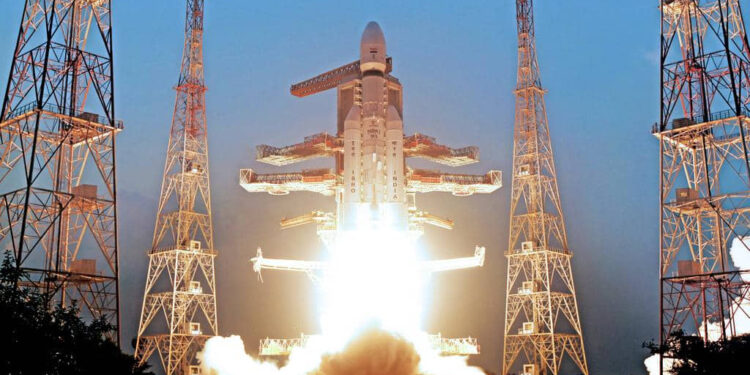On November 2, 2025, ISRO successfully launched the CMS-03, India’s heaviest communication satellite, into its planned Geosynchronous Transfer Orbit (GTO). This was a big step forward for India’s space program and its strategic capabilities.
Mission Overview and Significance
Today’s mission was conducted using the powerful LVM3-M5 known as the Bahubali rocket, placed the 4,410 kg multi-band communication satellite into orbit at 16 minutes after liftoff from Sriharikota’s Satish Dhawan Space Centre. This operation was another resounding success in demonstrating that India can launch such heavy-payload satellites with entirely indigenous technologies. This model is yet another step toward India’s self-reliance in terms of satellite communications, not to mention its interests in strategic areas.
CMS-03 Satellite: Capabilities and Purpose
Designed to ensure a safe, high-performance, and reliable communication coverage for both civilian and military, including isolated and maritime zones, CMS-03 is the successor to INSAT and GSAT satellites, upgrading the previous versions with completely renovated transponder capacity, multi-band support , and a multifunctional, multi-beam architecture.
- The coverage area includes all of India’s land and large areas of ocean, which directly support national programs like BharatNet, Digital India, and defense communications.
- The satellite will greatly improve encrypted communication for ships, submarines, aircraft, and island posts in the Indian Navy. This will allow for real-time strategic coordination over thousands of kilometers.
Launch Vehicle Performance and Innovations
The LVM3-M5 is the most advanced rocket in India and can carry the most weight. For CMS-03, it flew an optimized flight path with solid, liquid, and cryogenic stages that were lit in a certain order:
- The S200 boosters gave the first push with 204.5 tons of solid fuel.
- The L110 stage kept going up with 115.9 tonnes of liquid propellant.
- The C25 cryogenic stage, which held 28.6 tons of liquid hydrogen and oxygen, propelled the vehicle to a speed of 10.14 km/s, at which point the satellite was released at a height of 179.8 km.
- This flight also successfully tested the C25 stage’s ability to reignite in orbit. This will make it possible for future missions to send multiple satellites into different orbits with greater accuracy.
Strategic Impact and Future Missions
The primary role of the CMS-03 satellite will be that of maritime security and national defense, by becoming the lynchpin of India’s Maritime Domain Awareness grid and help network-centric naval operations. Additionally, the advanced communication capabilities will increase the Indian Navy’s mission efficiency while offering strategic and civilian demands applications for its 15-year operational life.
More missions are planned, with LVM3-M6 expected in December 2025, as well as PSLV-C62 and SSLV-L1 launches for customer satellites and technology demonstrations in reference to India’s upcoming Gaganyaan human spaceflight.
Quotes and Reactions
- V. Narayanan, the head of ISRO, said, “LVM3-M5 successfully injected into the required orbit precisely…” The heaviest satellite in GTO orbit is CMS-03. The vehicle’s performance was improved so that it could carry 10% more weight.
- Narendra Modi, the Prime Minister, praised ISRO and said, “It is commendable how our space sector has become synonymous with excellence and innovation…” Their successes have helped the country move forward and improved the lives of many people.
Conclusion
The launch of the CMS-03 is a technological success and a symbolic milestone for India. It shows off world-class space engineering, strengthens national security, and sets the stage for future high-performance, secure communication infrastructure that is necessary for both strategic and civilian progress.


